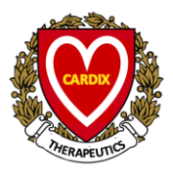What is Bradycardia?
Bradycardia: Slow Heart Rate
Bradycardia is a heart rate that’s too slow. What’s considered too slow can depend on your age and physical condition. Elderly people, for example, are more prone to bradycardia.
In general, for adults, a resting heart rate of fewer than 60 beats per minute (BPM) qualifies as bradycardia.
But there are exceptions. Your heart rate may fall below 60 BPM during deep sleep. And physically active adults (and athletes) often have a resting heart rate slower than 60 BPM.
Causes for bradycardia include:
- Problems with the sinoatrial (SA) node, sometimes called the heart’s natural pacemaker
- Problems in the conduction pathways of the heart that don’t allow electrical impulses to pass properly from the atria to the ventricles
- Metabolic problems such as hypothyroidism (low thyroid hormone)
- Damage to the heart from heart disease or heart attack
- Certain heart medications that can cause bradycardia as a side effect
Symptoms of bradycardia
A heart rate that’s too slow can cause insufficient blood flow to the brain. Symptoms of bradycardia include:
- Fatigue or feeling weak
- Dizziness or lightheadedness
- Confusion
- Fainting (or near-fainting) spells
- Shortness of breath
- Difficulty when exercising
- Cardiac arrest (in extreme cases)
Treatment of bradycardia
Currently, there is no regulatory-approved drug for this type of treatment in the U.S. and globally. The present treatment requires the surgical insertion of a cardiac pacemaker. Our patent new drug, with a non-invasive and non-electromagnetic interferences methodology, can improve cardiac function by increasing heart rate and cardiac output to treat bradycardia and related diseases.
